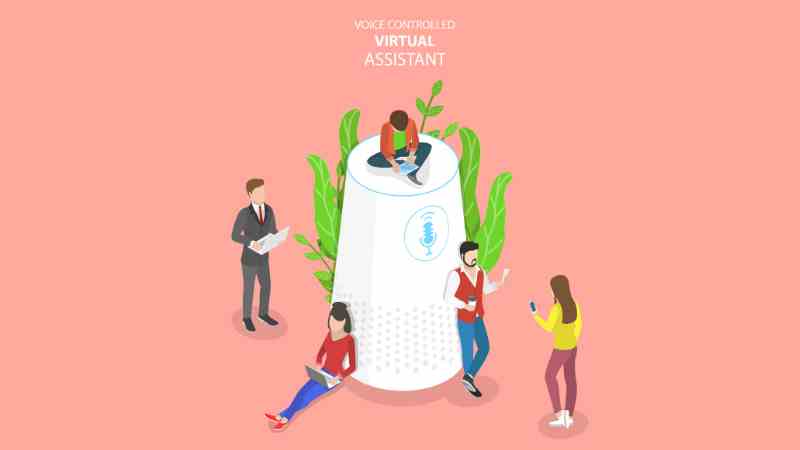Technology Integration In Business | An Overview

In the present fast changing business environment, technology has become indispensable to organizations wishing to be ahead of the pack. Business operations have changed through business technology integration, incorporating cutting-edge technologies in working and communication for growth. As a seasoned business professional, I have seen how implementing new technology in an organization can change it, and I am excited to discuss this important topic further.
Through this extensive article, we will scrutinize the importance of technology integration in business; benefits; problems, and technology integration strategies for making sure that it is successfully put into practice. In addition, we will look at specific businesses that have prosperously adopted new technology implementation as well as finding out the best way those companies were on their way to digitalization.
The Importance of Technology Integration in Business

Integration of technology in business is not anymore an alternative but rather a must. Failure to adopt and integrate modern technology used in business in these days of digital disruption means they perish with time. The significance of technology integration cannot be overemphasized because it enables firms to control operations better, improve efficiency, and maintain competitive advantage over others.
Companies can tap into new opportunities for increased customer satisfaction, growth, and innovation by incorporating frontiers such as digital marketing or customer relationship management systems into all aspects of their work processes. This ranges from automation of repetitive duties to digging into insights derived from data accumulation by utilizing tools operating on a data-driving model. It is thus true that tech integration with other facets allows informed decision-making by organizations using resources optimally.
Also Read -The Key to Event Success: Harnessing the Power of Event Planning Software
Advantages of Technology Integration in Business

Multiple advantages are provided by technical integration within businesses because embracing it allows:
Enhance Operational Efficiency: Automation plus digital tool usage can reduce manual labor significantly hence minimizing mistakes leading towards maximizing productivity plus saving costs.
Improve Decision-Making: Valuable insights are made possible through data analytics and business intelligence tools which inform company decisions based on data instead of encouraging strategic growth while mitigating risk management.
Foster Collaboration and Communication: Use cloud-based platforms or collaborative instruments to encourage seamless communication and collaboration among remote groups thus enhancing connectedness and employee engagement.
Deliver Superior Customer Experiences: With customer relationship management (CRM) systems and other technologies, businesses can deliver personalized marketing, predict clients' needs, and offer exceptional service leading to higher satisfaction levels and loyalty.
Drive Innovation: Tech integrations provide an opportunity for more innovation, allowing organizations to invent new products or services in ways that may disrupt industries while opening up additional revenue streams through product development and research and development.
Challenges of Technology Integration in Business

As tempting as the advantages of technology integration are, it is not all rosy during the implementation of new technology. Some obstacles that firms face when they want to implement new technology include;
Resistance to Change: Adopting new technology in business by individuals within organizations might be hindered based on their mindset and organizational culture which is a major barrier towards how to introduce new technology to an organization.
Cybersecurity Risks: As businesses become more reliant on technology, they also become more vulnerable to cyber threats, such as data breaches, malware attacks, and unauthorized access, raising concerns about privacy.
Integration complexity: Linking the current framework with developing infrastructure may be cumbersome from extensive planning through testing before compatibility is established creating seamless technical integrations in practice.
Skill Gaps: Sometimes there are gaps caused by fast technological advancements that require continuous employee training or upgrading skills aimed at ensuring employees are able to make use of new technology business effectively.
Cost Considerations: Rising sophistication levels within business demand costly new technology implementation plans plus maintenance processes involving huge amounts spent on hardware-software personnel hence straining budgeting, particularly for small-scale operations.
Also Read - How OSINT Integration in Agencies Impacts the Market
Strategies for Successful Technology Integration in Business

To overcome the hurdles that come with implementing new technology, one has to take a strategic approach. Below are some technology integration approaches which could be adopted by organizations to successfully integrate technology.
Develop a Comprehensive Technology Integration Plan: Collaborate with key stakeholders to develop an all-inclusive plan that highlights the business objectives, timelines, resources, and milestones for tech integration. This strategy must be congruent with the general objectives of the company/organization.
Foster a Culture of Continuous Learning: Encourage growth mindsets and provide continuous learning opportunities like e-learning, so that employees can acquire relevant knowledge and skills to make optimal use of emerging technologies.
Implement Change Management Strategies: Employ proactive change management methodologies as part of resistance management strategies such as clear communication; employee involvement; and training programs aimed at easing the technology adoption process.
Prioritize Cybersecurity: Deploy strong cybersecurity measures such as firewalls, encryption systems, access controls, and regular security audits to protect sensitive data and minimize cyber risks involved.
Leverage Partnerships and Outsourcing: Think about forming partnerships with technological suppliers, and consultants or outsourcing specific activities in order to get specialized support as well as assistance, particularly during complicated projects or those that require technology integration capabilities beyond internal resources.
Examples of Successful Technology Integration in Business

Let us look at some practical examples of businesses that have embraced digital transformation successfully as a way of demonstrating how integration technology is prevailing:
Amazon: Amazon's success is mainly credited to its innovative use of technology across its operations – from highly efficient supply chain management utilizing production technology to a personalized product recommendation system on its website delivering seamless customer experience.
Uber: By utilizing mobile technology combined with a GPS tracking system, Uber transformed the transport industry by disrupting traditional taxi services through a convenient on-demand ride-sharing platform, taking advantage of industry trends.
Netflix: Strategic integration of cloud computing services; data analytics along with personalized recommendation algorithms facilitated Netflix's evolution from a physical DVD rental service provider into a leading streaming platform today where it is, adapting to changing market trends.
Starbucks: Starbucks has integrated technology by introducing mobile ordering and payment systems, which enables it to use data analytics in personalizing customer experiences and optimizing store operations while considering local culture.
Airbnb: Airbnb is successful in the hospitality industry largely due to its user-friendly online presence that effortlessly links hosts and travelers for secure transactions enhancing travel experience on a global scale.
Best Practices for Technology Integration in Business
For maximum benefits from what is integrated technology while minimizing risks, it is important to observe best practices. Below are some recommended best practices:
Conduct Thorough Research and Planning: Carry out extensive research and planning before implementing new technology to understand available options, potential impacts, and integration requirements.
Prioritize User Experience: Make sure integrated technologies are user-friendly and intuitive because technology adoption as well as effective utilization highly depends on positive user experiences of these systems.
Implement Robust Data Management Strategies: Set up strong data management strategies like data governance policies, data security measures, data quality assurance processes, etc., that will protect invaluable business information while keeping its integrity intact.
Foster Cross-Functional Collaboration: Encourage collaborative approaches across departments or technology integration teams to include diverse perspectives and address various requirements when integrating technology holistically.
Continuously Monitor and Optimize: Routine evaluation of the performance of integrated technologies with input from users/stakeholders helps identify areas that need improvement through feedback thus optimizing the journey toward successful integration.
Cloud Computing Platforms: Amazon Web Services (AWS), Microsoft Azure, and Google Cloud Platform offer scalable cloud-based solutions for hosting applications, data
Final thoughts
As technology integration in business grows, the line between the digital and physical worlds continues to blur. For companies that can successfully embrace this trend, the growth opportunities are endless. However, for businesses that are hesitant to integrate new technologies or fail to do so effectively, the future may be bleak. In a world where consumers increasingly expect products and services to be available online and on their mobile devices, those companies that lag in terms of technology will find it challenging to stay competitive.
So far, we have seen examples of both ends of the spectrum. On the one hand, companies like Amazon have been incredibly successful in integrating new technologies into their business model. On the other hand, companies like Kodak failed to keep up with changing consumer demands and filed for bankruptcy protection in 2012. The lesson is clear: if you want your business to succeed in today's digitally connected world. You need to embrace new technologies wholeheartedly and use them as a tool for growth.
Also, Read




Comments